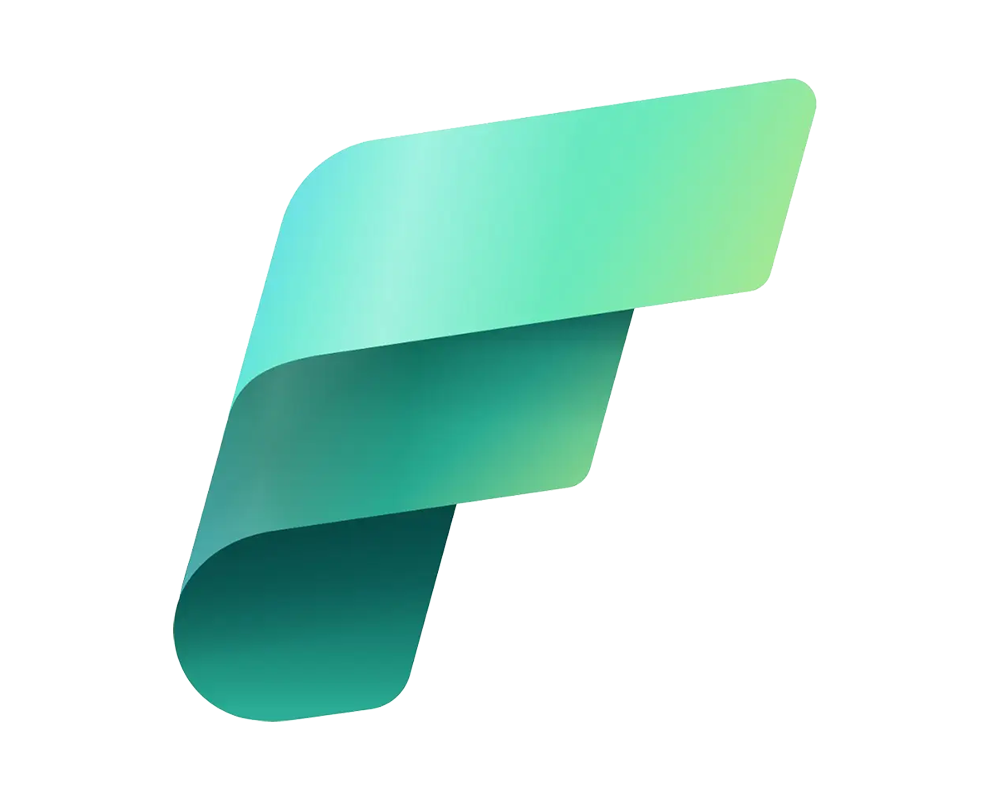
What is Microsoft Fabric? A Complete Guide to Its Features, Benefits, Use Cases, and Functionality
#DrivingExpertLedTransformation


Understanding Microsoft Fabric
Information is now the most prized strategic resource for enterprises. However, despite its significance, most companies cannot deliver the full value of their data. Siloed systems, disparate analytics tools, and cumbersome data governance models are the common reasons behind decreased response times, inefficient operations, rising infrastructure expenses, and strategic blind spots. While volumes of data increase exponentially, the disconnect between raw data gathering and valuable insights remains a significant impediment to agility, innovation, and competitiveness.
What is Microsoft Fabric in this context? It is Microsoft’s cloud-native next-generation data and AI platform intended to close this gap. It is an end-to-end software-as-a-service (SaaS) analytics solution that brings data engineering, data integration, data science, real-time analytics, and business intelligence together as a unified solution. Based on the solid foundation of Azure Data Factory, Azure Synapse Analytics, and Power BI, Microsoft Fabric streamlines and speeds up data-driven decision-making by providing:
OneLake: A centralized data lake
OneSecurity: An integrated security and governance built on Microsoft Purview
By offering an integrated, AI-driven data platform, Microsoft Fabric allows businesses to break down data silos, simplify governance, and accelerate faster, more strategic insights at scale. Read on to learn more.
Microsoft Fabric: Essential Market Insights and Stats
- Forrester Research found that Microsoft Fabric returns 379% ROI within three years through significant cost savings and productivity gains.
- The global data fabric market, comprising Microsoft Fabric, stood at $2.29 billion in 2023 and is anticipated to reach $12.91 billion by 2032, at a 21.2% CAGR because of increasing cloud adoption and demands for data security.
- Microsoft Fabric provides high availability for enterprise workloads with a guaranteed 99.9% uptime.
Microsoft Fabric: Essential Features
Discover the core Microsoft Fabric features that enable seamless data integration, advanced analytics, and strong governance within your organization.

Source: Microsoft
End-to-End Analytics: Microsoft Fabric features support a unified analytics process by integrating data ingestion, storage, transformation, analysis, and visualization into one platform. This end-to-end pipeline enables organizations to efficiently process raw data from various sources and create actionable insights through interactive reports and dashboards.
Integrated Services: Microsoft Fabric unifies essential services such as Azure Data Factory for data transformation and movement, Azure Data Lake Storage for raw data storage, Azure Synapse Analytics for data warehousing, and Power BI for visualization into a single shared environment, removing silos and simplifying data workflows.
Spark Integration: Microsoft Fabric natively supports integration with Apache Spark, enabling sophisticated data processing and big data analytics on large-scale data, perfect for significant data initiatives.
Lakehouse Architecture: Microsoft Fabric’s lakehouse architecture balances the versatility of data lakes with the performance of data warehouses. It keeps data in an open format while allowing for SQL-based querying to support efficient and scalable analytics
Power BI for Visualization: Embedded Power BI provides robust, intuitive visualization capabilities, enabling technical and business users to turn data into concise, interactive insights.
Scalable Data Warehousing: Microsoft Fabric enables the development and operation of highly optimized structured data warehouses to support complex queries and historical data analysis with standard SQL tools.
Data Pipelines with Data Factory: Microsoft Fabric’s Azure Data Factory automates data ingestion and transformation, supporting stable, scalable data pipelines that prepare data for subsequent analysis.
How Does Microsoft Fabric Work?
The solution integrates your complete data lifecycle in one place to respond to how Microsoft Fabric works. Using built-in connectors and pipelines, it begins by consuming data from various cloud, on-premises, and SaaS sources. Microsoft Fabric uses Azure Data Factory and Spark engines to transform and prepare data. Structured data is processed in Synapse SQL pools, handling complex queries and reporting requirements.
Integrated capabilities such as SynapseML and Copilot support machine learning model building and hosting within the platform, while Power BI offers interactive dashboards for organizational insights. Moreover, Data Activator automatically detects and monitors anomalies, maintaining data integrity and system reliability end-to-end.
Top Microsoft Fabric Benefits
Simplified Data Management
Microsoft Fabric streamlines data management by providing a centralized platform that combines storage, integration, and analysis work, no longer requiring multiple tools. This unification saves on licensing and infrastructure costs and increases efficiency, enabling data teams to spend more time creating insights instead of dealing with separate systems. Centralized data governance also makes policy enforcement easier, ensuring data security, compliance, and simpler oversight throughout the organization.
Enhanced Data Protection
One of the significant benefits of Microsoft Fabric is its robust security model, which includes identity and access management, threat protection, data encryption, and compliance controls. These components safeguard sensitive applications and data, securing your business in a dynamic digital threat landscape.
Scalability
Built on Azure, Microsoft Fabric offers integrated scalability for storage and compute, allowing your business to handle everything from small data sets to petabytes of data without intervention. Its cloud-native architecture scales data volumes and processes requirements without hardware constraints, ensuring seamless business operations even during peak usage or sudden spikes in demand.
AI/ML Integration
Microsoft Fabric integrates AI and machine learning into its foundation, allowing quicker model development, deployment, and automation at the edge of enterprise data. This will enable businesses to speed up insights, strengthen predictive analytics, and reduce costs by automating sophisticated processes and minimizing manual intervention.
Cost Effectiveness with Microsoft Fabric
Cost efficiency is one of the significant Microsoft Fabric benefits, as it offers a cloud-based, pay-as-you-go approach that does away with initial investments in hardware and software. So, there’s no high CapEx if you leverage Fabric. You can scale resources as needed, manage costs by paying for what you use, and lower maintenance overhead by eliminating on-premises infrastructure, enabling your team to stay focused on innovation and strategic initiatives.
Accelerated Time to Insights
One of the major advantages of Microsoft Fabric is its capacity to accelerate data-driven decision-making. Through the automation of data pipelines via Data Factory, the integration of built-in analytics tools for rapid analysis, and the enablement of self-service reporting using Power BI, Fabric helps you quickly turn raw data into actionable insights, enabling technical and non-technical users alike.
Microsoft Fabric for Power BI
Microsoft Fabric for Power BI extends the platform’s capabilities by offering easy access to Fabric’s data lakes and warehouses right within Power BI. You can use AI-driven features such as Copilot for quicker report creation and leverage Data Activator for real-time data refresh and alerting. With this close integration, it is easier to create, share, and consume business intelligence, as data-driven decision-making becomes more efficient.
Microsoft Fabric Use Cases
Real-time Retail Analytics: Retailers can use Microsoft Fabric to integrate data from online and offline sales, customer behavior, and POS systems to gain real-time insights. It facilitates real-time inventory optimization, offers personalization, and dynamic pricing strategies.
Benefits
- Better inventory planning
- Customized customer interaction
- Agile price adjustments
Predictive Maintenance in Manufacturing: Manufacturers can leverage Microsoft Fabric to gather sensor and IoT data, which allows for predictive maintenance. Through the application of machine learning, they can forecast failures in equipment and plan maintenance in advance.
Benefits
- Less downtime and expenses
- Extended equipment life
- Fewer surprise failures
Financial Risk Analysis: Financial institutions can leverage Fabric’s data processing and AI to examine market data, portfolios, and economic trends to enhance risk evaluation and decision-making precision.
Benefits
- Reduce financial exposure
- Quicker compliance reporting
- Smarter investment choices
Supply Chain Optimization: With Microsoft Fabric, companies can consolidate supplier and logistics data to predict demand, route-optimize, and track performance, improving supply chain responsiveness.
Benefits
- Lowered storage and logistics costs
- Stronger supplier collaboration
- Resilient, data-driven operations
Healthcare Data Integration: Medical professionals can combine data from EHRs, lab tests, and monitoring devices with Microsoft Fabric, providing governed, secure access for enhanced clinical care and effectiveness.
Benefits
- Streamlined care delivery
- Improved diagnostic results
- Improved hospital operations
One of the major advantages of Microsoft Fabric is its capacity to accelerate data-driven decision-making. Through the automation of data pipelines via Data Factory, the integration of built-in analytics tools for rapid analysis, and the enablement of self-service reporting using Power BI, Fabric helps you quickly turn raw data into actionable insights, enabling technical and non-technical users alike.
Why Korcomptenz?
We are recognized as a Contender in the 2025 ISG Provider Lens™ Quadrant Study for the Microsoft Cloud and AI Ecosystem, specifically in AI Services for Microsoft Cloud and Data Fabric on Azure. As a Microsoft Certified Solution Partner, AI Cloud Partner, and Fabric Partner with Azure Analytics Specialization, we leverage Generative AI, Agentic AI, Microsoft Fabric Copilots, and advanced visualization to deliver powerful AI, enterprise analytics, and modern data cloud solutions to global customers.
We’ve built industry-ready solution accelerators such as KOR BankIQ, KOR SmartForge, and KOR ESGenius that help our clients achieve faster time-to-value, with AI-powered insights and enterprise-grade scalability.
Our Microsoft Fabric specialists can assist you in how to enable Microsoft Fabric within your current data environment and inform you about Microsoft Fabric pricing to further your business objectives. Learn how Fabric can take your reporting and analytics to the next level, enabling both short-term efficiencies and enduring value.
Wrapping Up
What the supercomputer achieved in computing, Microsoft Fabric will do for data, revolutionizing how companies leverage data for the next wave of AI-driven applications. By consolidating various technologies under one common, lake-focused, and open platform, Fabric breaks down data silos, liberates them from vendor lock-ins, and enables organizations to unlock the full potential of their data.
But what does Microsoft Fabric do beyond data consolidation? It offers a seamless, end-to-end service that enables businesses to ingest, store, analyze, and visualize diverse Microsoft Fabric data types while integrating AI and machine learning directly into their workflows. Understanding how to use Microsoft Fabric strategically can give your organization the edge to drive innovation, automate decision-making, and accelerate time to insights.
At Korcomptenz, we assist you in getting the most out of Microsoft Fabric’s capabilities and laying the foundation for AI-driven transformation. Contact us today for a free consultation.
Ready to revolutionize your data foundation for the age of AI? Let’s discuss how our Microsoft Fabric service can drive your data-to-insight journey. Reach us for a no-cost consultation.

Frequently Asked Questions (FAQs)
What is Microsoft Fabric?
What are the major components of Microsoft Fabric?
How does Microsoft Fabric simplify data integration and management?
What are the business benefits of leveraging Microsoft Fabric's Lakehouse architecture?
Share this article
Use AI to summarize this article



